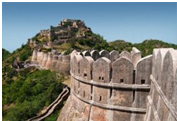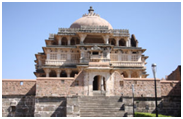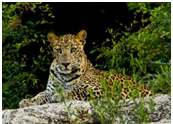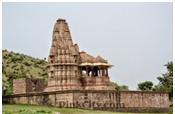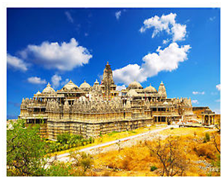The Kumbhalgarh Fort is located on the banks of Banas River and is the second most important fort of Rajasthan. It is surrounded by 13 mountain peaks and strengthened by watchtowers and rounded bastions. It was built by Rana Kumbha and it took him some 15 years to build this fort. The fort stretches across 36 km of the Aravalli Mountains and houses a domed palace. The length of the winding walls was instrumental in defending the citadel from the series of battlements. The fort rises from a prominent ridge, at a height of 1100 metres from the sea level. There are seven gates that guard this fort and are wide enough for eight horses to march abreast. the fort is the second largest wall in the world after the Great Wall of China and the second largest fort in Rajasthan after Chittorgarh Fort.

